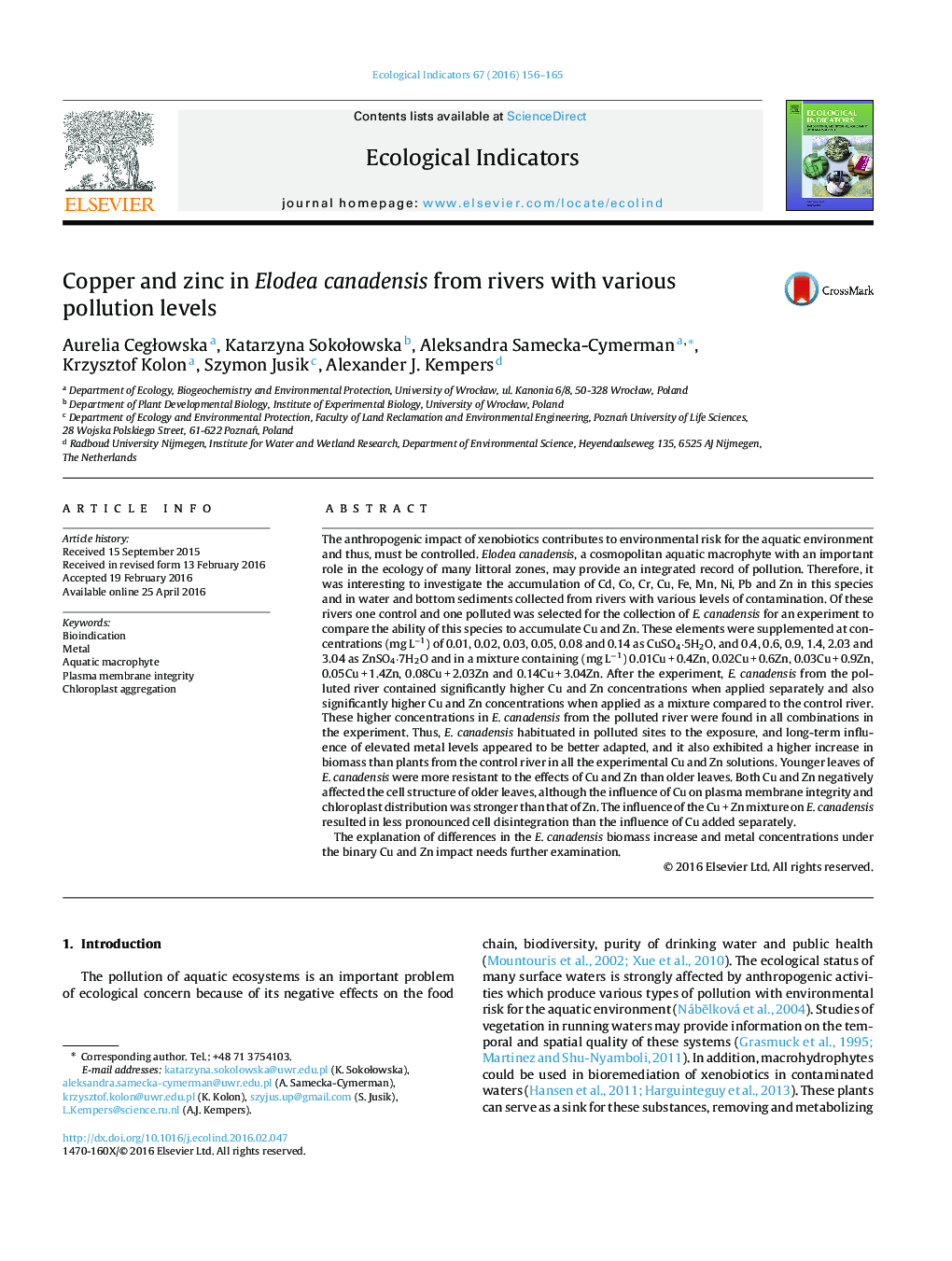| کد مقاله | کد نشریه | سال انتشار | مقاله انگلیسی | نسخه تمام متن |
|---|---|---|---|---|
| 4372863 | 1617135 | 2016 | 10 صفحه PDF | دانلود رایگان |
• Higher increase in biomass of E. canadensis under the binary influence of Cu and Zn.
• The younger leaves were more resistant to the Cu and Zn effect than the older leaves.
• Binary Cu + Zn on E. canadensis resulted in less cell disintegration than Cu.
The anthropogenic impact of xenobiotics contributes to environmental risk for the aquatic environment and thus, must be controlled. Elodea canadensis, a cosmopolitan aquatic macrophyte with an important role in the ecology of many littoral zones, may provide an integrated record of pollution. Therefore, it was interesting to investigate the accumulation of Cd, Co, Cr, Cu, Fe, Mn, Ni, Pb and Zn in this species and in water and bottom sediments collected from rivers with various levels of contamination. Of these rivers one control and one polluted was selected for the collection of E. canadensis for an experiment to compare the ability of this species to accumulate Cu and Zn. These elements were supplemented at concentrations (mg L−1) of 0.01, 0.02, 0.03, 0.05, 0.08 and 0.14 as CuSO4·5H2O, and 0.4, 0.6, 0.9, 1.4, 2.03 and 3.04 as ZnSO4·7H2O and in a mixture containing (mg L−1) 0.01Cu + 0.4Zn, 0.02Cu + 0.6Zn, 0.03Cu + 0.9Zn, 0.05Cu + 1.4Zn, 0.08Cu + 2.03Zn and 0.14Cu + 3.04Zn. After the experiment, E. canadensis from the polluted river contained significantly higher Cu and Zn concentrations when applied separately and also significantly higher Cu and Zn concentrations when applied as a mixture compared to the control river. These higher concentrations in E. canadensis from the polluted river were found in all combinations in the experiment. Thus, E. canadensis habituated in polluted sites to the exposure, and long-term influence of elevated metal levels appeared to be better adapted, and it also exhibited a higher increase in biomass than plants from the control river in all the experimental Cu and Zn solutions. Younger leaves of E. canadensis were more resistant to the effects of Cu and Zn than older leaves. Both Cu and Zn negatively affected the cell structure of older leaves, although the influence of Cu on plasma membrane integrity and chloroplast distribution was stronger than that of Zn. The influence of the Cu + Zn mixture on E. canadensis resulted in less pronounced cell disintegration than the influence of Cu added separately.The explanation of differences in the E. canadensis biomass increase and metal concentrations under the binary Cu and Zn impact needs further examination.
Journal: Ecological Indicators - Volume 67, August 2016, Pages 156–165
